Fall is a busy time on a Kansas farm. It’s the place on the calendar where harvest and planting intersect.

Milo harvest 2015
Unlike wheat harvest, which wraps up in less than two weeks, fall harvest lasts from September until all of the crops are harvested. Which, depending on the weather, can be anywhere from November to early January (although that’s unusual and not really ideal).
While the rest of the world is thinking about pumpkins and spiced cider, my dad is in the field on every dry day and praying for rain after he’s planted the wheat.
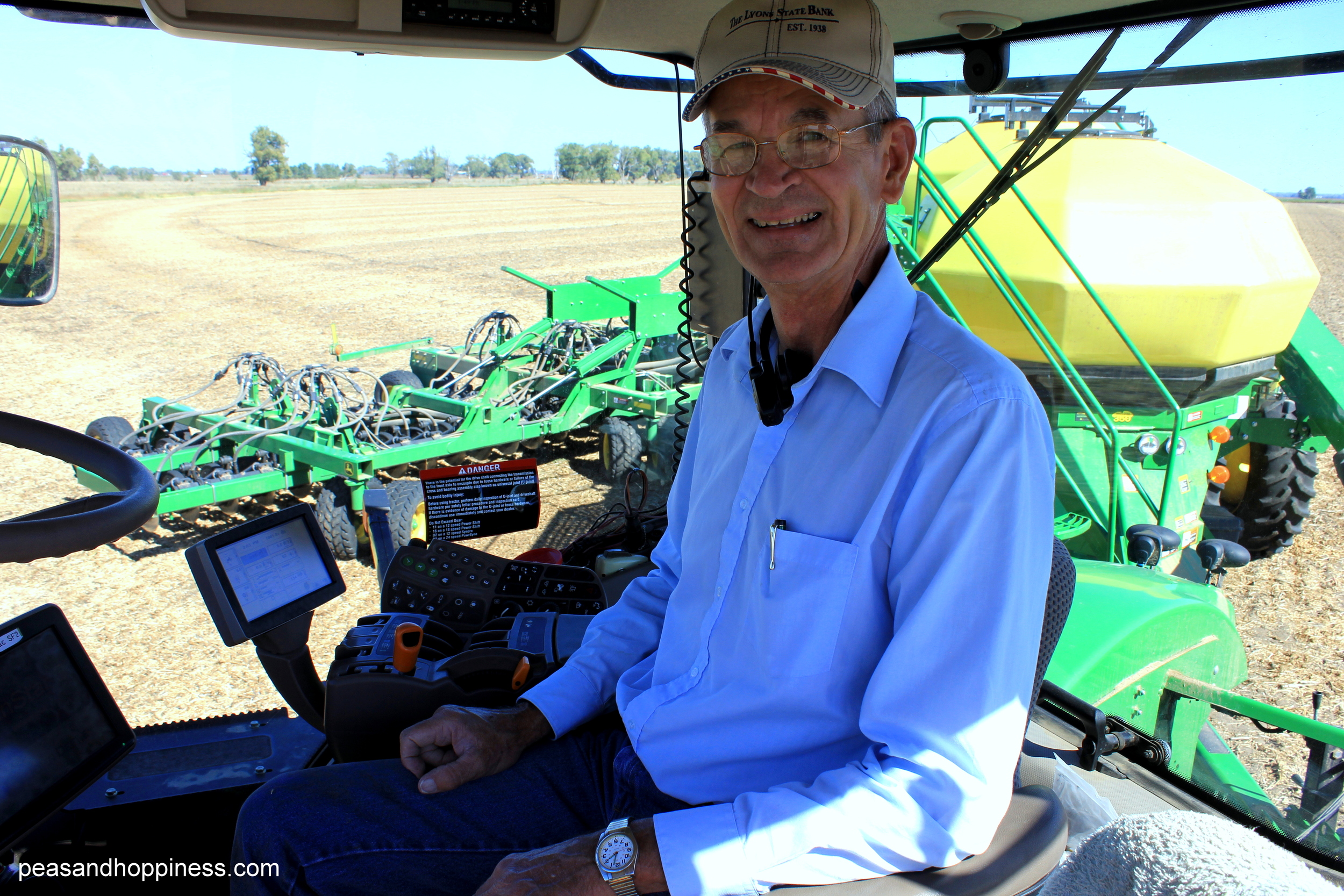
A view from the cab of the air seeder, drilling wheat with Dad
In Central Kansas, Labor Day typically signals the beginning of fall harvest, when the corn is dry enough to cut. The dryland corn is ready first — this is the corn that has relied only on rainwater without any additional watering. Next comes the irrigated corn, which was watered throughout the growing season when the rain didn’t come at the right time.
Next in the lineup are the dryland, full-season beans. Soybeans, that is. These aren’t the edamame type of soybeans that you see in grocery store or Japanese restaurant; these are used to make soybean oil or feed for pigs and chickens. After the dryland beans, the irrigated beans are harvested. Double-crop beans (which are planted after summer’s wheat harvest) are usually the last crop to be brought in.
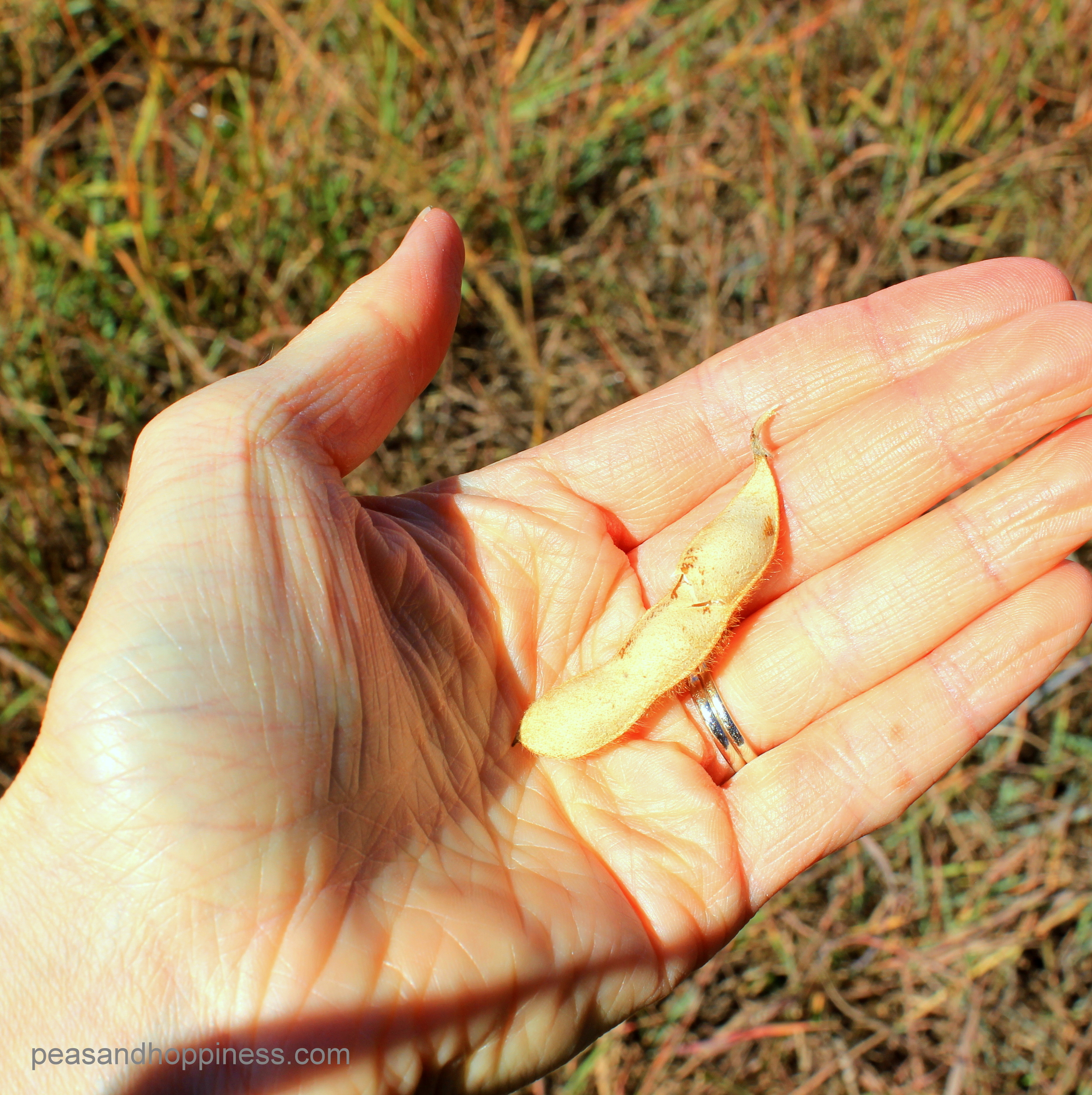
Soybeans in the pod
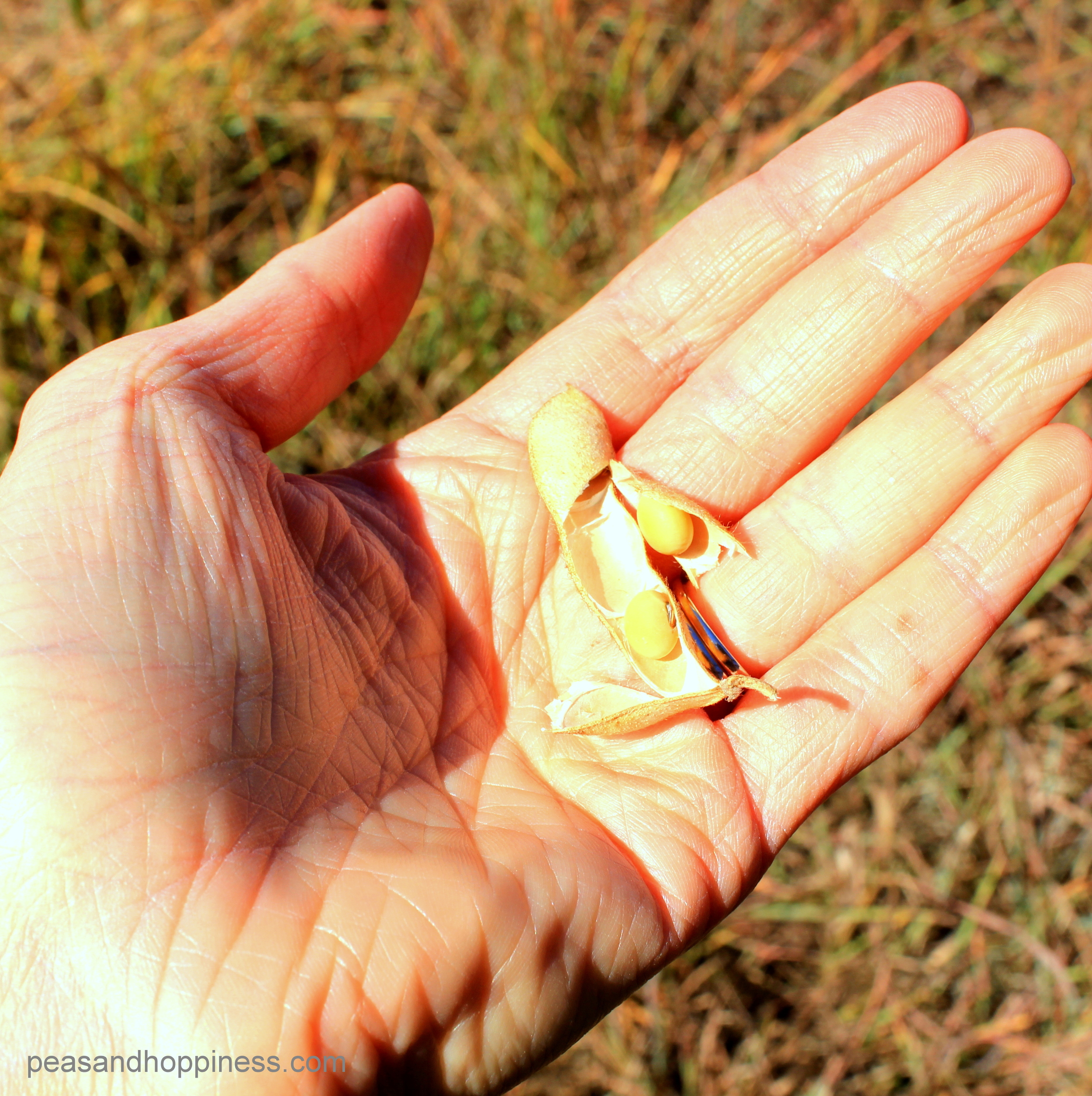
See the little soybeans?
This is a particularly busy time on the farm, as it’s not only harvest time, but also time to plant wheat. My dad’s crop rotation calls for double-crop wheat to be planted after the full-season beans. So while harvest continues in one field, in another somebody is manning the air seeder and planting wheat. This hard red winter wheat sprouts in the fall, goes dormant in the winter, and finishes growing the following spring to be harvested in the summer.
After the beans, my dad moves on to milo harvest. Milo (or sorghum) is little known to consumers, but it is a great crop for the climate of Central Kansas. It is good at withstanding periods of drought and its yields are incredible. As I rode the combine with my dad this fall, I was shocked at how quickly we filled two semi loads with grain; it took less than 30 minutes!
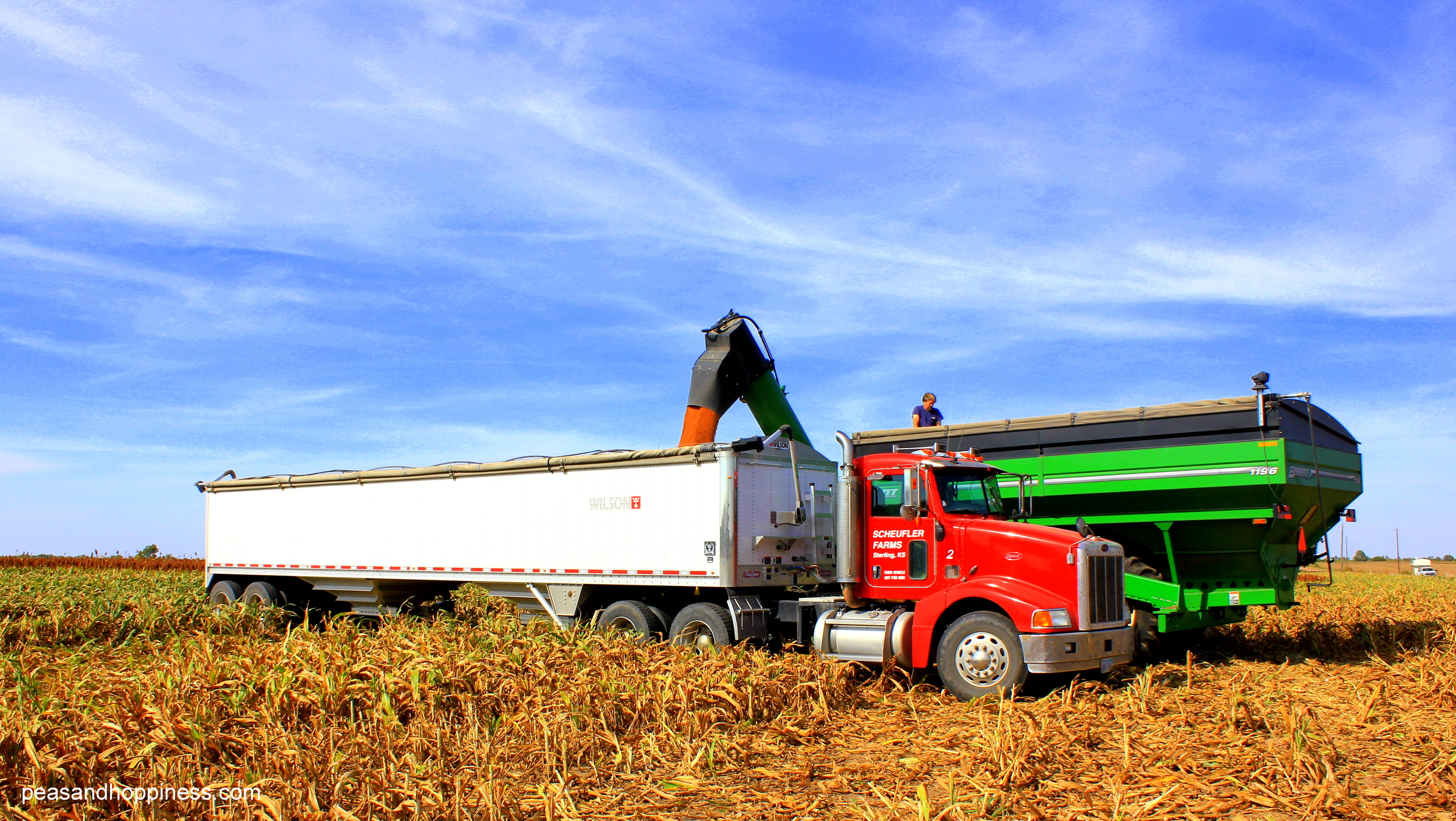
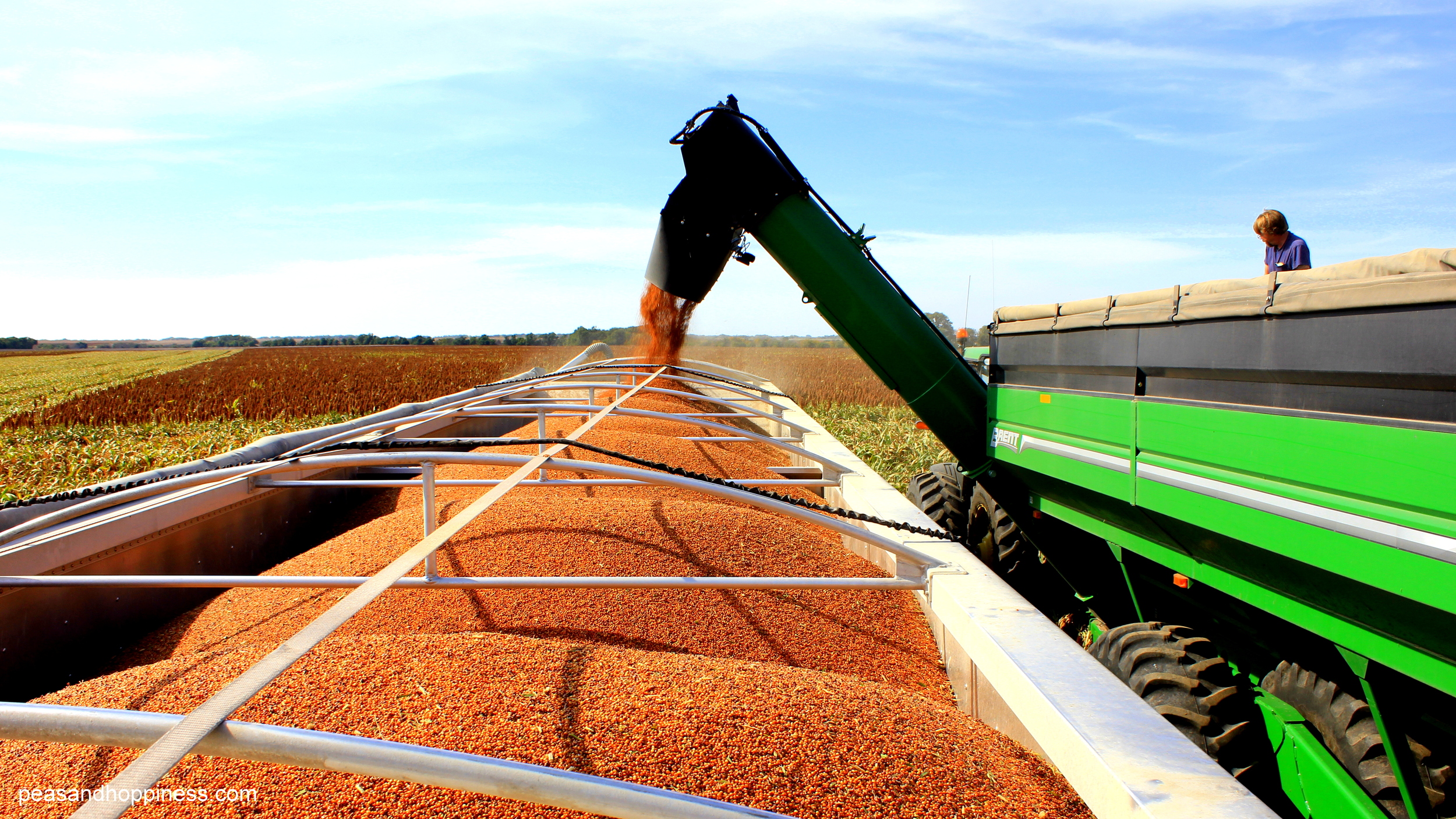
Semi load of milo
Modern harvest is nothing to sneeze at. One day as Grandpa Scheufler was riding the combine with my dad, he reminisced about how much farming had changed in his lifetime. In one minute, my dad harvests as much grain as my grandpa did in one day.
That one truth describes the monumental change that our culture has experienced in the last 100 years. It explains the mass exodus away from the farm and into cities. It explains the never-before-seen imbalance in calories in versus calories out that has defined the obesity epidemic of the 21st century; obesity rates have double (and in some states tripled) since 1985.
New technology has led to incredible increases in efficiency and thus a significant reduction in the amount of labor required to produce our food. As a society, we are now in the process of learning to adapt to this new normal.
Despite all of this – all of the change, all of the technology – harvest is still harvest. My dad and his crew still stayed up harvesting until 2:00 a.m. a few nights ago. My mom still makes “lunches” twice a day and delivers them to the crew in the field so not a moment is wasted in bringing in the crops. We all still pray for rain, or for rain to hold off until Dad finishes cutting that last field, or for market prices to allow a good return-on-investment.
So the next time you feel stressed at work trying to catch up on the latest project, remember that you’re not the only one working late. And the next time you see a farmer (or his or her spouse), make sure to say thank you for the long hours they put in to provide you with your next meal. Hard work and a lot of love make the world go ’round.
With love, from Peas and Hoppiness.